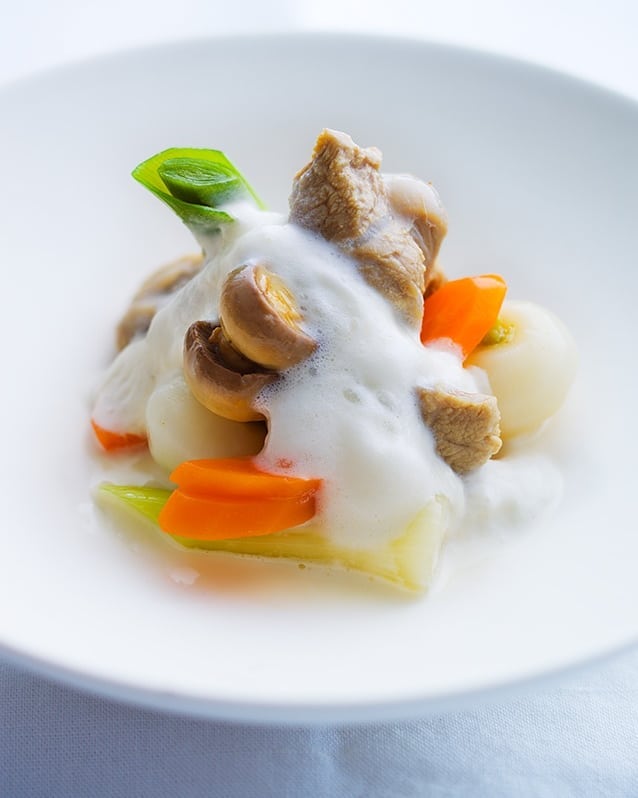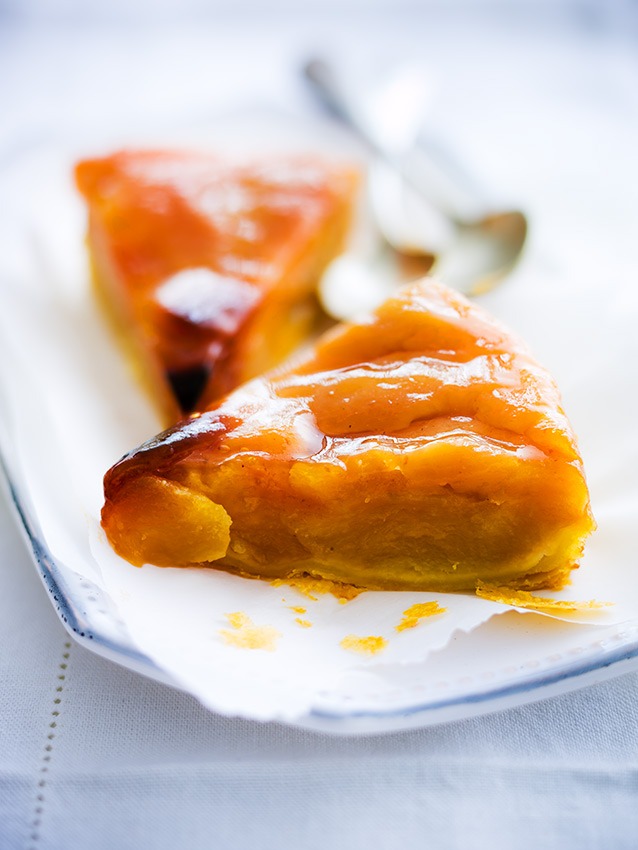Week’s menu
In this confinement, we are all put to the test: caregivers, patients, families … One of the only positive points is that we rediscover our values of care for the other, solidarity, common good and love. And what better proof of love than to cook for those we love. This transmission value has been driving me for years. First with our son, Nathan, whose bursts of gluttony at the table fill us with happiness, then with all those I love. Every day they inspire me to create and imagine new tasting and associations. Then, I wanted to extend this creativity in concentric circles, from the Scook cooking school in Valence, then in the edition of creative recipes, easy and accessible in the books of the same name. So that you can, at home, in these exceptional times, find these simple recipes for cooking at home with the essentials techniques to their success. I hope you enjoy these cooking tips dedicated to such a beautiful cause: the pleasure of making people happy.
With these recipes, my wish is to enhance eating well, in our daily lives, as we can, with what we have at home of course. These recipes are not imposed, they only offer one more perspective when cooking. Here are the recipes to discover this week: Look at the recipes :
THE FINE PIE OF SMALL VEGETABLES,
YOUNG PARMESAN CREAM
parmesan cream
100 g young parmesan
20 cl entire milk
Salt

📷 Mickael Roulier
VEAL “BLANQUETTE”
REVISITED
This blanquette contains no fat. It is creamy and lit up with an acid note. The meat is blanched for the first time, in order to remove impurities, and the sauce, to be light and airy, mixes broth, agar-agar, egg white, as well as a touch of mustard and lemon, all in a siphon. Result: a delicate texture that renews the genre.
Veal “blanquette”
600 g veal meat for stewing (shoulder, almost)
1.5 l vegetable broth
1 bouquet garni
1 clove
1 pinch of salt
The siphon sauce
25 cl cooking juices from the blanquette
1⁄2 tsp. agar
1 tsp. strong mustard
1⁄2 lemon juice
1 egg white
fine salt
The vegetables
2 carrots
8 small turnips
4 mini leeks
12 button mushrooms
4 spring onions (or new onions)
1 dash of olive oil
15 cl of veal cooking juices
Coarse salt
Fine salt
Equipment
Skimmer,
fine strainer,
siphon,
1 gas cartridge,
kitchen thermometer (optional)
Cut the meat into pieces about 5 cm square. place them in a saucepan and cover with cold water. Bring to a boil, remove from heat, remove the meat and discard the water. put the meat back in the pan, this time with the vegetable broth, the bouquet garni, the clove and the salt. Bring to a boil then cook for 1 hour at a very low broth, taking care that the meat is always covered with liquid. at the end of cooking, remove from heat. keep the meat warm in the cooking juices so that it does not dry out.
in a saucepan, heat the cooking juices with the agar-agar. Bring to a boil then remove from the heat. strain with a fine strainer, let cool, then add the mustard, lemon juice and egg white. Salt lightly. pour the preparation into a siphon and place it in a container of warm water, in a double boiler (the water should be at 50 ° C, if you have a thermometer).
Peel and cut the carrots into rings, a little beveled if possible. Wash the leeks and peel the small turnips and the mushrooms (cut their stems). cook all the vegetables (except the mushrooms) separately in boiling salted water for about 5 or 6 minutes. drain them then immerse them in a bowl of cold water to stop cooking and fix their color. drain them again.
before serving, cook the button mushrooms in a frying pan over a low heat, with a dash of olive oil, for 5 min. add the other vegetables, cook for another 3 min, then pour a little cooking juices. Let cook 3 or 4 min. Take it off the fire. adjust the seasoning and keep warm.
Close the siphon and engage a gas cartridge. drain the hot pieces of meat and then distribute them on a plate. harmoniously place the different vegetables on top. finish by depositing the sauce using the siphon. Serve immediately.
Melt 40 g of butter in a saucepan then add 40 g of flour. Cook 2 or 3 min over low heat, stirring constantly. For 50 cl of cooking juice over it, mix well and bring to the boil. Cook 2 or
3 min, then add 5 cl of liquid cream. Salt lightly.

📷 Mickael Roulier
CREME CARAMEL
WITH MUSCOVADO SUGAR
Muscovado caramel
100 g sugar
100 g muscovado sugar or caster sugar or brown sugar if you don’t have
7.5 cl of water
1⁄2 vanilla pod
50 cl whole milk
2 whole eggs
2 egg yolks
100 g sugar
Equipment
6 baking pans or ramekins,
kitchen thermometer,
hand whip,
little ladle
In a saucepan, combine the two sugars and the water. Bring to a boil then cook over medium heat. Meanwhile, place the baking molds in front of you. Immerse the thermometer in the boiling sugar: when the temperature reaches 160 ° C, remove the pan from the heat. immediately pour a layer of about 2 cm of caramel into the molds, then let cool.
Cut the half vanilla pod in half lengthwise. scrape the inside with a small knife to collect the small black seeds. dans une casserole, faites bouillir le lait avec la vanille et ses graines.
in a saucepan, boil the milk with the vanilla and its seeds. in a bowl, quickly mix the whole eggs, the yolks and the sugar with a hand whisk. gradually pour in the hot vanilla milk, then mix with the hand whisk. Preheat the oven to 160 ° C (th. 5-6).
Remove the half vanilla pod. delicately, with a small ladle, fill the caramelized molds with the egg cream, place in a plate with high edges, then pour a little hot water into it, almost at the height of the molds, to make a double boiler. bake for 15 to 20 minutes of cooking, depending on the size of the molds. In order not to be mistaken, look at the consistency of the cream: it must have coagulated but must remain trembling, and above all not harden too much. Remove the mussels from the oven and double boiler, then place them in the refrigerator for at least 2 hours. Serve chilled!
You can prepare these caramel creams well in advance and leave them in the refrigerator until you are ready to taste them. Indeed, it is very cold that they are irresistible.

📷 Mickael Roulier
The Tatin Pie
TONKA BEAN
If the Tatin sisters left us this delight, I revisit it with the Tonka bean, for warmer and more enveloping flavours. To make a success of this cake is to take the time to preserve the apples until they are caramelized, in order to develop all their aromas, and this thanks to a soft cooking, all this on a fine and light puff pastry…
Variation | If you don’t have tonka beans, use a dash of cinnamon.
THE PUFF PASTRY
300 g flour
5 g salt
250 g butter
15 cl of water
Caramelized apples with
tonka bean
80 g butter
1 kg of apples
100 g sugar
1 lemon
1 tonka bean
Equipment
22 cm mould,
rolling pin, grater
Melt the butter in the pan over medium heat. Peel the apples, cut them in half, remove the heart and seeds. Place the apple halves in the mould by tightening them well so that the bottom is completely covered, without leaving any free space. Sprinkle the apples with the lemon juice. Spread over the apples sugar with the finely grated tonka bean, as evenly as possible. Place the mould on a very low heat. During baking, turn the mould regularly so that the apples caramelise perfectly and evenly. This process takes about 50 minutes to 1 hour. Then remove the mould from the heat.
Preheat the oven to 200 °C (th. 6-7). Meanwhile, spread the puff pastry and form a circle corresponding to the size of the mold. Remove from heat, cover the apples with puff pastry, put in the oven and cook for 15 to 20 minutes. At the end of cooking, the pastry should be light blond, but no more. Stop cooking by soaking the bottom of the mould in a basin of cold water (without wetting the dough). Leave the caramel to cool for 30 minutes. To unmould the Tatin tart easily, warm the bottom of the tin over a fairly high heat for a few moments to soften the caramel. Turn the tart over onto a serving dish and serve.

📷 Mickael Roulier

